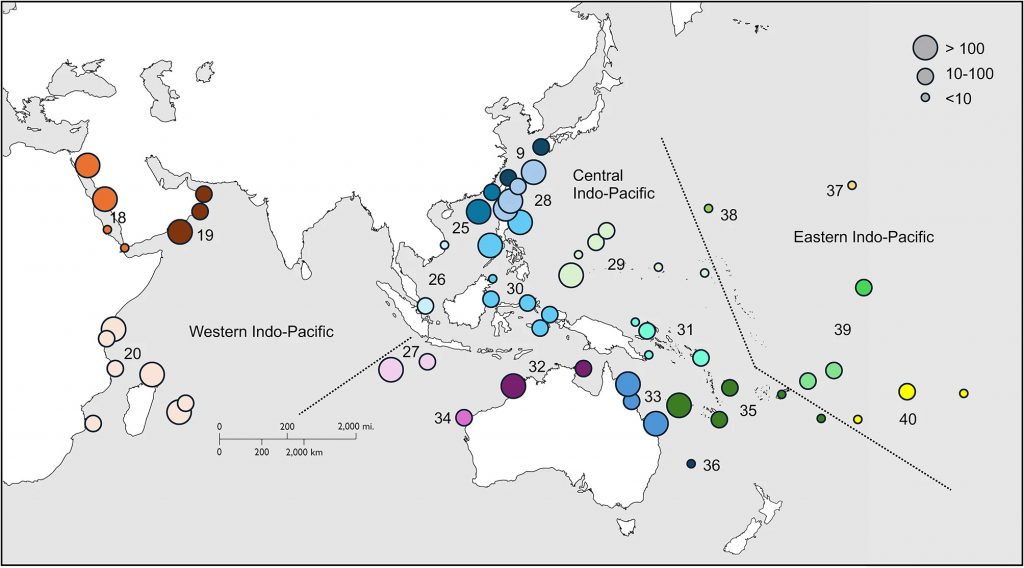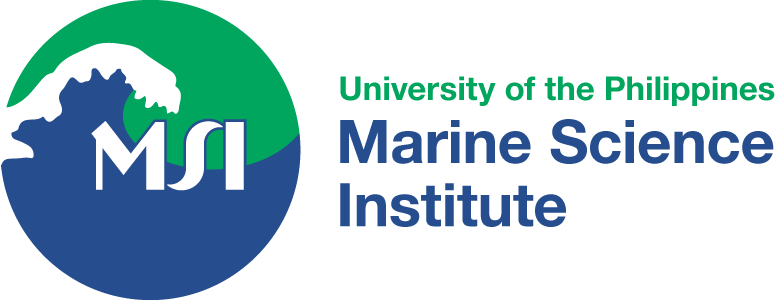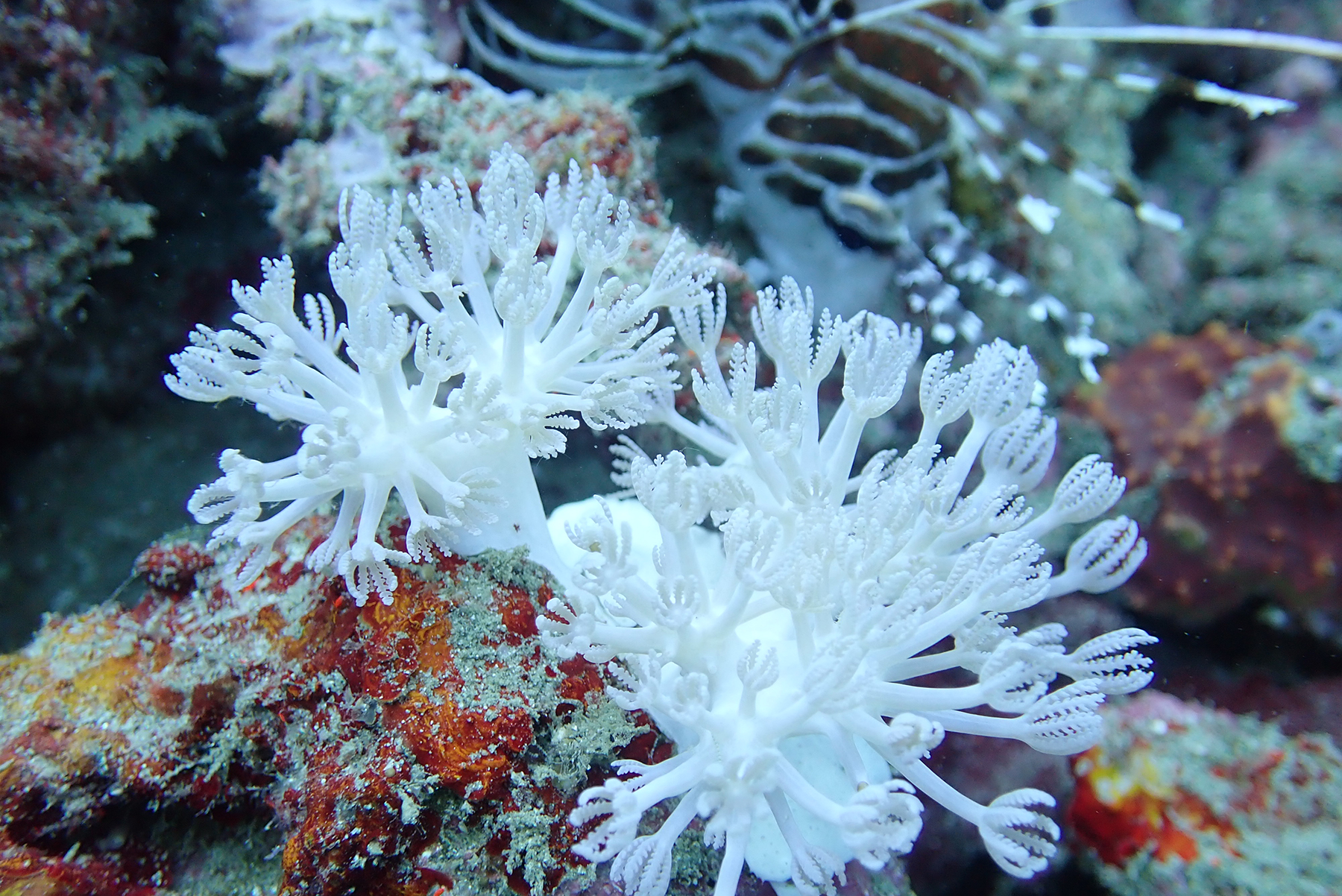West Philippine Sea and Benham Bank soft corals are among most diverse in the world
FEATURED PHOTO: The pulse coral Xenia sp. in Puerto Galera, Occidental Mindoro.
Soft corals, which are members of the class Octocorallia, are major components of marine ecosystems, including coral reefs. They are known to contribute to reef complexity and serve as habitats for many organisms. They also have potential economic benefits, such as being sources of compounds that can be used for making medicine, and due to their beautiful colors and shapes, they also add to the aesthetic of many tourist diving sites around the world.
Despite their ecological importance and potential economic benefits, soft corals are still understudied in many parts of the world. But in the Philippines, the tides are starting to turn.
Published this May in Nature Scientific Reports, the study “Biodiversity and biogeography of zooxanthellate soft corals across the Indo-Pacific” is a massive international effort to explore the global patterns in diversity of this major yet understudied group of organisms. Specimens were pooled with collections from over 40 countries and territories, each sample gathered from biodiversity collections, museum collections, and surveys under different research projects spanning from 1998 to 2023.
Among the major representatives of the study were the soft corals from the Philippines.
“The samples from the Philippines were major representatives for the Coral Triangle region. The paper shows that the Philippines, including the West Philippine Sea and Benham Bank in northeastern Philippines, is part of one of the centers of zooxanthellate soft coral diversity,” said Dr. Jue Lalas, one of the two Filipino co-authors.
Philippine samples were collected from the Kalayaan Island Group, Western Palawan, Pangasinan, Puerto Galera, northeastern Philippines, and Benham Bank in the Philippine Rise during various projects from 2019 to 2021.
Most were collected by Dr. Lalas while he was a research associate at the UP Marine Science Institute. The samples were collected with assistance from Rhea Luciano and Christine Segumalian, Dr. Lalas’ fellow labmates at the Interactions of Marine Bionts and Benthic Ecosystems (IMBiBE) Laboratory led by Dr. Maria Vanessa Baria-Rodriguez. Dr. Baria-Rodriguez is the other Filipino co-author for the study.

The study, spearheaded by Dr. Catherine McFadden, used DNA barcoding to analyze over 4000 samples.
Two single-locus barcoding markers, mtMutS and 28S rDNA, were used. Through assigning molecular operational taxonomic units to the specimens, patterns in diversity and endemicity revealed the Indo-Australian Archipelago and the Western Indian Ocean as centers of species richness for soft corals.
“There are just very few papers on soft corals in the Philippines, despite them being obviously dominant components of Philippine coral reefs,” said Dr. Lalas. “One of the reasons for this is just the lack of people working on this group, as compared to hard corals.”
In the Philippines, Dr. Baria-Rodriguez is trying to fill this gap. Last 2019, members of the IMBiBE lab, headed by Dr. Baria-Rodriguez, were trained by Dr. Yehuda Benayahu, one of the foremost experts on soft coral taxonomy, on basic soft coral identification and taxonomy. Since then, the IMBiBE lab has published studies that further improved our understanding on the distribution and ecology of soft corals in some parts of the Philippines. Last 2023, they also organized another training on soft coral taxonomy and basic identification, which included participants from UP MSI and other partner local universities.
Improving soft coral science in the Philippines will open more opportunities to understand the true diversity and ecology of our waters.
The study’s authors also hypothesized that there are likely more species in the West Philippine Sea, South China Sea, and Red Sea that were not detected by their methods.
“We have undoubtedly underestimated numbers of species for these taxa,” the study states.

Dr. Lalas is positive that there are still many discoveries to be made not just in the West Philippine Sea, but in Philippine waters as a whole.
“If you look at the study more closely, and the literature on Philippine soft corals, we have yet to explore their diversity in most of the Philippine seas. This represents an opportunity for coral reef scientists in different parts of the country,” he said.
Dr. Lalas also notes that more people are starting to realize the importance of soft corals, especially with the changes brought by climate change.
“In some disturbed sites in the Indo-Pacific, some studies have reported a shift to the dominance of soft corals. They have been generally reported to have high resilience to disturbances. However, soft corals may also eventually be subjected to mortality if stressors persist,” he said. (READ: A world without color: the bleached soft corals of Bolinao)
“Overall, soft corals can serve as useful indicators of environmental disturbances,” he added. “Ongoing research continues to shed light on their ecological roles in coral reefs amid global and local changes.”
For Dr. Lalas, this study was a big step forward in establishing a connection between Filipino soft coral researchers and experts from around the world.
It also highlights the role of the Philippines, including Benham Bank and the West Philippine Sea, as a critically important center of marine biodiversity that must be protected.
Dr. Maria Vanessa Baria-Rodriguez and Dr. Jue Lalas are grateful to the many funding agencies and institutions that made the collection of Philippine soft coral samples possible. Samples from the Kalayaan Island Group and western Palawan were collected through PROTECT WPS 1 and PROTECT WPS 2 funded by DENR-BMB, and UPGRADE-CIA funded by the National Security Council. Pangasinan samples were collected with funding from UP OVPAA. Puerto Galera samples were collected through the DDHP project of DOST-PCHRD. Samples from northeastern Philippines and Benham Bank were collected through the SECURE Philippine Rise project funded by DENR-BMB.
References
McFadden, C.S., Erickson, K.L., Lane, A., Nassongole, B., Aguilar, S. Dunakey, S.K., Durkin, K.M., Lalas, J.A.A., Kushida, Y., Macrina, L., Minor, N.P., Morales-Paredes, M., Nelson, J., Peddada, A., Poole, S., Porto, R., Purow-Ruderman, R., Snyder, K.E., Wismar, T., Samimi-Namin, K., Baria-Rodriguez, M.V., Benzoni, F., Huang, D., Reimer, J.D., Paulay, G., Quattrini, A.M., Ekins, M., and Benayahu, Y. (2025). Biodiversity and biogeography of zooxanthellate soft corals across the Indo-Pacific. Scientific Reports 15, 15461. DOI: 10.1038/s41598-025-98790-7.

